#nautil.us
Photo

The Mystery of the Largest Light in the Sea
This giant squid has the world’s biggest light-producing organs. But why?
A quarter-mile below the ocean’s surface, in the borderless realm of the midwater, two blue-green orbs illuminate the inky black.
They glow for a few seconds then disappear. When they return, it’s for the same duration. The same disappearance. It’s a signal, a message, the morse code of an ancient language of light.
Friend or foe? Rival or mate? I am here, I am this.
These orbs belong to Taningia danae, a species of deep-sea squid who can grow to more than seven feet in length and weigh more than 130 pounds. Also known as the Dana octopus squid for their eight arms and lack of feeding tentacles, these animals glide through the depths on a pair of huge muscular fins that unfurl from their maroon-colored body, or “mantle.”
Their arms are lined with two rows of sharp retractable hooks. And, like most deep-sea squid, they are adorned with light organs called photophores. They have some on the underside of their mantle. There are more facing upward, near one of their eyes. But it’s the photophores at the tip of two stubby arms that are truly unique. The size and shape of lemons—each nestled within a retractable lid like an eyeball in a socket—they are by far the largest photophores known to science...
Read more:
https://nautil.us/the-mystery-of-the-largest-light-in-the-sea-308189
#taningia#squid#cephalopod#mollusk#ocean#marine biology#science#animals#nature#bioluminescence#octopus squid
209 notes
·
View notes
Note
I saw this article and I thought you'd be interested https://nautil.us/new-tarantula-discovered-in-unexpected-place-365798/
Clickable link: https://nautil.us/new-tarantula-discovered-in-unexpected-place-365798/
New tarantula dropped :)
58 notes
·
View notes
Text
WHAT IS OUR UNIVERSE EXPANDING INTO??
Blog#265
Wednesday, January 25th, 2023
Welcome back,
That’s a great question. The answer, though, is that it’s not a great question. It’s a little tricky, so let me walk you through it. Yes, our universe is expanding. Our universe has no center and no edge. The Big Bang didn’t happen in one location in space.
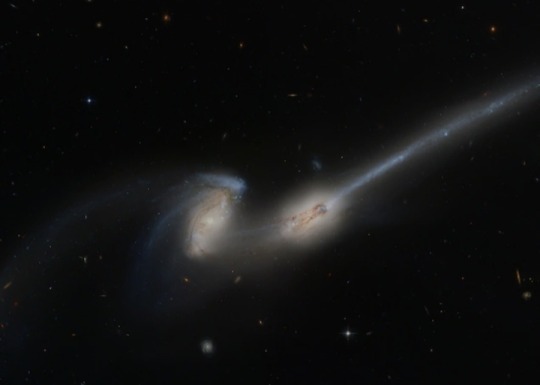
The Big Bang happened everywhere in the cosmos simultaneously. The Big Bang was not a point in space. It was a point in time. It exists in all of our paths.
When we say the universe is expanding, we mean that if you map a bunch of galaxies and measure the average distances between those galaxies, you’ll get a number, and then you wait a little bit, a year, a billion years, whatever, and then you go to make the same measurement.

Those distances, the average distances, are going to be larger. When we say we live in an expanding universe, we’re saying that the distances between galaxies, on average, grows with time. And that’s it. There’s no center, there’s no edge.
From our perspective here in the Milky Way, it looks like the entire universe is expanding away from us. But if I go to literally any other galaxy in the entire cosmos, I get the same view. It looks like all the galaxies are expanding away from me.

The universe doesn’t expand into anything or from anywhere. The universe expands from itself and into itself. And I know that’s very hard to visualize, but thankfully, we have these powerful tools like mathematics that allow us to grapple with techniques that even we can’t imagine.

There does not have to be a frontier. We can define this very well mathematically, but let me ask you, “What is the center of the Earth?” You’ll say, “It’s the core where all the molten iron stuff is and all the mole people live. It’s in the center of the Earth.” OK. You can point to that.
But what if I were to ask you a slightly different question instead: “What is the center of the surface of the Earth?” Just latitude and longitude, give me the center of that. There is no answer.
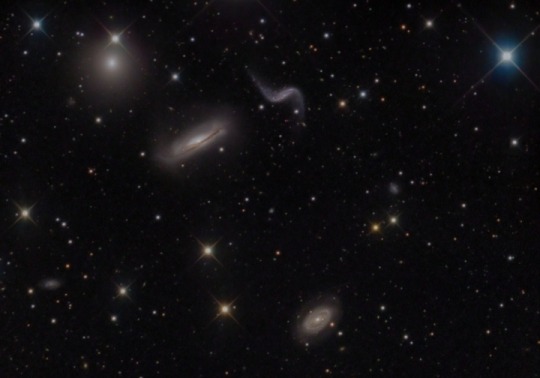
We have a North Pole. We have a South Pole. But those are arbitrary. You can put those wherever you want. And imagine our Earth was getting bigger and we were to measure the distance between New York and Paris, and then every year that distance is getting bigger and bigger and bigger.
There’s no center, no edge. And yet the distance between any two points still grows. This is very easy to visualize in two dimensions. We live in a three-dimensional universe. I can’t imagine it. I can’t think of it. I can think of the analogies in two dimensions, and I can trust the mathematics to take me into three dimensions.
Originally published on nautil.us
COMING UP!!
(Saturday, January 28th, 2023)
"CAN A STAR SURVIVE A BLACK HOLE??"
#astronomy#outer space#alternate universe#astrophysics#spacecraft#universe#white universe#space#parallel universe#astrophotography#cosmology#big bang comics
105 notes
·
View notes
Text
We have two separate salt-taste systems
https://nautil.us/salt-taste-is-surprisingly-mysterious-382855/
3 notes
·
View notes
Note
So happy you opened asks again ☺️ Would you care to share some music, book & film/TV series recommendations? Something you’ve been listening to/reading/watching lately?
Also, hope you’re doing well, I love your blog!
I've been terribly busy these past few months, so I haven't had much time for fun and games. If you have any recommendations (nothing too depressing though, I'm currently not in the right state of mind for emotionally draining stuff), please let me know.
Film/TV
The only two series I remember watching are Olive Kitteridge (fantastic, highly recommend; I also liked the book) and Severance (pretty interesting). I plan on watching the new season of Black Mirror soon.
Books
I finished Frankestein and am currently re-reading Emerson's Self-Reliance because I desperately need a pick-me-up.
I've been reading a ton of books in the genre I write as well, but I sincerely doubt anyone following me on here would care about that. I've probably read over 20 of these easy reads in the last few months.
When I'm busy and stressed out, my memory suffers, so I can't remember any interesting articles I've read recently except these three (bc I read them two days ago):
https://aeon.co/essays/until-we-treat-rapists-as-ordinary-criminals-we-wont-stop-them
https://aeon.co/essays/why-pregnancy-is-a-biological-war-between-mother-and-baby
https://nautil.us/when-mary-wollstonecraft-was-duped-by-love-287905/?_sp=b4cae776-70bf-433b-b27f-fcd28bb16d38.1697394829518
Music
Nothing new to report here. I've been listening to Meltt on repeat and the usual artists: Tool, APC, Deftones, Florence + The Machine, a little bit of 53 Thieves, some Tender, a smidgen of Hozier…
6 notes
·
View notes
Text
This day in history
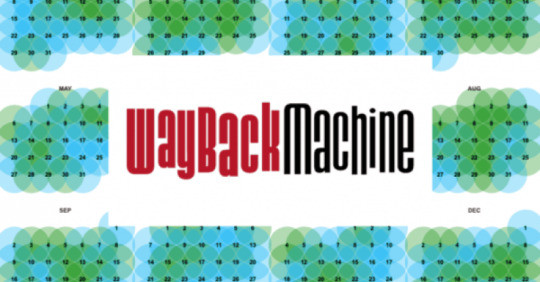
#20yrsago Creative Commons Emerging Tech conference demo with Lisa Rein, Matt Haughey and Aaron Swartz https://memex.craphound.com/2002/05/16/creative-commons-demo/
#20yrsago Creative Commons is live https://web.archive.org/web/20020602032039/http://www.creativecommons.org/
#15yrsago Amazon to launch DRM-free music service https://web.archive.org/web/20070518145626/http://biz.yahoo.com/bw/070516/20070516005337.html
#10yrsago Reflections on the acquittal of Byron Sonne https://web.archive.org/web/20120519073309/http://www.openfile.ca/toronto/toronto/text/byron-sonne-found-not-guilty-all-charges-has-plans-future
#10yrsago How Mitt Romney “created jobs” https://www.csmonitor.com/USA/Elections/President/2012/0119/Is-Mitt-Romney-really-a-job-creator-What-his-Bain-Capital-record-shows
#10yrsago Clay Shirky on the relationship between physical space and creativity https://vimeo.com/41492835
#10yrsago Unpacking privilege: straight white male is the lowest difficulty setting in the game of life https://whatever.scalzi.com/2012/05/15/straight-white-male-the-lowest-difficulty-setting-there-is/
#10yrsago Police loom over Byron Sonne’s victory party https://twitter.com/_fx_/status/202638857248837632
#5yrsago The strange, mutating story of “willpower” and what we think it might be as of right now https://nautil.us/against-willpower-5776/
#5yrsago America’s top cop-killing domestic terror threat is far-right “sovereign citizens” and militias https://www.theguardian.com/world/2017/may/15/sovereign-citizens-rightwing-terrorism-hate-us-government
#1yrago Who owns the covid vaccines: Socializing risk and privatizing gain for fun and profit https://pluralistic.net/2021/05/16/entrepreneurial-state/#patient-zero-money
5 notes
·
View notes
Link
Un mercoledì di febbraio del 1938, Guy Stewart Callendar, un ingegnere del vapore longilineo e dalla voce pacata, che aveva compiuto 40 anni solo una settimana prima, si trovava davanti a un gruppo di eminenti scienziati, membri della Royal Meteorological Society del Regno Unito. Aveva un'idea coraggiosa da condividere: il consumo di carburante da parte degli esseri umani stava rendendo il pianeta più caldo.
Secondo i calcoli di Callendar, nell'ultimo mezzo secolo, l'umanità ha aggiunto 150 miliardi di tonnellate di CO 2 all'atmosfera, aumentando la temperatura media globale di circa 0,03 gradi Celsius ogni decennio: una tendenza, ha osservato, che potrebbe accelerare.
Callendar, un ingegnere il cui lavoro quotidiano riguardava motori a vapore e turbine, sapeva di andare contro la saggezza scientifica tradizionale. Come scrisse all’inizio dell’articolo in cui esponeva dettagliatamente le sue scoperte, era ben consapevole che pochi scienziati “sarebbero stati disposti ad ammettere che le attività dell’uomo potessero avere qualche influenza su fenomeni di così vasta scala”. 1 Ma con calma, con metodo, procedeva.
Come previsto, la presentazione di Callendar ha subito incontrato scetticismo. Sir George Simpson, un eminente scienziato che presto dirigerà la Royal Meteorological Society, ha respinto il collegamento proposto tra l’aumento dei livelli di CO2 e la temperatura definendolo “piuttosto una coincidenza”. Sottintendeva anche che un non esperto non avrebbe potuto comprendere i processi atmosferici abbastanza bene da calcolare gli effetti della radiazione solare che Callendar aveva affermato veniva assorbita in quantità maggiori dall'aumento di CO 2 nell'atmosfera. Altri hanno sottolineato presunte carenze come la presunta inaffidabilità dei dati di Callendar.
Molte persone pensavano che fosse impossibile che l’umanità potesse sconvolgere un ordine planetario naturale – o divinamente ordinato – apparentemente stabile.
Callendar ha risposto lucidamente a queste critiche. Tuttavia, secondo gli standard scientifici prevalenti, non era davvero un esperto. Non era un dottorato di ricerca. scienziato ma possedeva un certificato presso una facoltà di ingegneria; non analizzava il clima all'interno di un grande istituto di ricerca ma lavorava da solo, nella casa che condivideva con la moglie e le loro due giovani figlie. Ma Callendar non era del tutto estraneo alla rigorosa ricerca scientifica. Era il figlio di Hugh Callendar, un illustre fisico britannico definito un "genio universale" dal premio Nobel Ernest Rutherford.
Hugh Callendar aveva studiato radiazioni, meteorologia e molti altri argomenti. Con un tipo migliorato di termometro da lui sviluppato, raccolse anche dati unici e ampiamente utilizzati sul vapore e sui motori a vapore. Suo figlio Guy è cresciuto in una "famiglia piena di libri e di una vasta gamma di gadget tecnici", secondo il biografo di Guy James Rodger Fleming. La formazione scientifica di Guy subì un'accelerazione quando nel 1922 fece apprendistato nel laboratorio di suo padre all'Imperial College di Londra, dove Guy imparò a svolgere ricerche scrupolose. Tuttavia, non ha scelto il mondo accademico. Dopo la morte di suo padre nel 1930, utilizzò la sua conoscenza del vapore per diventare un ingegnere del vapore.

SCOMODO DIRE LA VERITÀ: Guy Stewart Callendar, un ingegnere del vapore con formazione scientifica, ha trascorso anni raccogliendo ed elaborando dati manualmente per arrivare a un nuovo modo di guardare il mondo e al potere degli esseri umani di cambiarlo. La sua tenacia nel sostenere il ruolo della CO2 nell’aumento della temperatura globale ha dato i suoi frutti solo dopo la sua vita. Immagine gentilmente concessa dall'Archivio dell'Università dell'East Anglia / Wikimedia Commons.
Con questo background, il giovane Callendar aveva ricevuto una formazione eccellente, anche se insolita, in fisica e come attento ricercatore. Ciò lo ha preparato a esplorare in modo approfondito la possibilità che la CO2 prodotta dall’uomo abbia modificato le temperature globali, un’idea accennata ma respinta nel 19° secolo.
Nel 1856, la scienziata americana Eunice Foote dimostrò per la prima volta che la CO2 atmosferica e il vapore acqueo assorbono fortemente il calore della luce solare. 2 Successivamente il fisico irlandese John Tyndall dimostrò che l'assorbimento avviene alle lunghezze d'onda degli infrarossi e scoprì così l'effetto serra. Il calore della luce solare si irradia dalla superficie terrestre come luce infrarossa. Prima che questo calore fuoriesca nello spazio, viene assorbito dalla CO 2 e dal vapore acqueo e il calore accumulato riscalda la Terra. Si pensava che il vapore acqueo fosse più importante della CO 2 in questo processo. Ma nel 1896, il futuro premio Nobel Svante Arrhenius sostenne che la CO2 avrebbe potuto avere effetti enormi. Ha calcolato che la CO2 aggiunta derivante dalla combustione del carbone potrebbe modificare le temperature globali, anche se, sulla base dell'attuale produzione industriale, ciò richiederebbe secoli.
Tuttavia, il calcolo di Arrhenius non era convincente. La scienza dell'epoca non comprendeva appieno il modo in cui la CO 2 assorbe la luce infrarossa e molti scienziati pensavano che l'aggiunta di CO 2 non avrebbe mai potuto essere un fattore significativo. Inoltre il calcolo era puramente teorico; non è stato supportato da prove concrete di aumento dei livelli di CO 2 o delle temperature mondiali. Inoltre molte persone, scienziati o meno, ritenevano impossibile che l’umanità potesse sconvolgere un ordine planetario naturale, o divinamente ordinato, apparentemente stabile. Per queste ragioni il risultato di Arrhenius fu largamente ignorato.
Callendar sapeva di andare contro la saggezza scientifica tradizionale.
Callendar, tuttavia, ha presentato prove reali di una connessione a lungo termine tra la CO2 atmosferica di origine antropica (cioè prodotta dall'uomo) e una tendenza al riscaldamento che si verifica nel presente, non nel lontano futuro; poi ha spiegato la tendenza con una teoria scientificamente valida. E nonostante la sua scarsa accoglienza iniziale, ha continuato con ulteriori ricerche per supportare le sue conclusioni.
L'audace perseveranza di Callendar di fronte a una comunità scientifica dubbia fu sicuramente rafforzata dalla fiducia nella propria formazione e giudizio scientifico, che aveva ricevuto sotto la tutela di suo padre.
Una delle necessità era disporre di dati attendibili. Callendar ha trovato le tendenze da lui riportate raccogliendo resoconti distanti delle prime misurazioni della CO 2 atmosferica e analizzando decenni di dati contenuti nei World Weather Records dello Smithsonian Institution, con la sua "massa di dettagli statistici, inclusi molti milioni di dati accurati e standardizzati". letture della temperatura", come descrisse nel suo articolo del 1938. Ha selezionato scrupolosamente i dati sulla CO 2 più affidabili e ha scelto 147 siti che fornivano un quadro equilibrato delle temperature globali. Ha faticosamente estratto e analizzato manualmente questi set di dati, un precursore di ciò che gli scienziati ora fanno abitualmente – in un lampo digitale – con enormi raccolte di big data.
La seconda esigenza era quella di spiegare le tendenze osservate. Callendar ha utilizzato la fisica fondamentale per modellare il modo in cui la CO2 nell'atmosfera modifica la temperatura della superficie terrestre. Questo modello, anch’esso calcolato a mano, è stato un precursore delle moderne simulazioni basate su computer (probabilmente basate sull’intelligenza artificiale) che sono essenziali per la ricerca e la previsione del clima.
Le affermazioni contenute nell'audace articolo di Callendar sono state confermate nei successivi ottant'anni di scienza. Fu il primo a trovare prove concrete del fatto che l’uso umano di combustibili fossili aveva già aumentato la CO2 atmosferica ( del 6% nell’ultimo mezzo secolo) e a determinare il parallelo aumento della temperatura nello stesso periodo. I suoi calcoli furono la prima analisi a dimostrare quanto l'aumento della CO 2 avesse effettivamente cambiato le temperature. Callendar ha anche stabilito che la maggior parte della CO2 aggiunta dall'uomo non sarebbe stata rimossa dal ciclo naturale che trasporta il carbonio attraverso i sistemi della Terra, quindi pensava che la CO2 atmosferica di origine antropica avrebbe continuato ad aumentare.
C'era di più. Egli predisse quanto si sarebbero spostate le zone climatiche, calcolando un arretramento di circa 22 miglia e 79 miglia per le zone polari rispettivamente nel XX e nel XXII secolo. Ha individuato una tendenza nei dati per i siti ad alta quota a riscaldarsi più rapidamente rispetto a quelli più vicini al livello del mare. Ha tenuto conto dell’aumento degli effetti di “isola di calore” delle aree urbane man mano che crescevano e si sviluppavano durante il suo periodo di studio. (Così, stabilì che le letture di altissima qualità provenivano da luoghi isolati come Upernivik, Groenlandia e Apia, Samoa.) E per mettere ulteriormente alla prova le sue idee, guardò indietro nel tempo geologico per indagare sulle ultime ere glaciali e sui periodi di riscaldamento, per vedere se forze naturali simili potessero essere in gioco nella sua epoca, ma non riusciva a sostenerlo in modo plausibile.
Pertanto, ha concluso Callendar, “la combustione di combustibili fossili, sia che si tratti di torba dalla superficie o di petrolio da 10.000 piedi di profondità”, è la causa dell’aumento delle temperature globali. Sebbene avesse solide argomentazioni a sostegno di ciò, un singolo documento di ricerca difficilmente avrebbe potuto convincere una comunità scientifica che ne dubitava dell’intera premessa. Tuttavia, il semplice fatto di presentare quello che venne chiamato effetto Callendar, con le domande e le critiche che evocava, stimolò la ricerca di altri e dello stesso Callendar. In quasi tre dozzine di articoli successivi, egli perfezionò alcuni dei numeri citati nel 1938, ma non modificò mai le sue affermazioni generali.
Quando Callendar morì nel 1964, gli scienziati non avevano ancora ampiamente accettato la realtà del riscaldamento indotto dall’uomo, sebbene visse abbastanza da vedere i primi segni di un cambiamento. Nel 1960, Charles Keeling dello Scripps Institute of Oceanography iniziò a pubblicare dati sull'aria incontaminata dell'Antartide e successivamente sul vulcano Mauna Loa delle Hawaii, che rivelavano chiaramente un livello crescente di CO 2 (lo mostrò a 315 parti per milione nel 1958; oggi è è di 421 ppm; nel XIX secolo preindustriale si attestava intorno a 280 ppm). 3 Si accumularono altre prove, e un punto di svolta si verificò intorno al 1990, quando il Gruppo intergovernativo sui cambiamenti climatici delle Nazioni Unite, le società scientifiche e i ricercatori iniziarono a raggiungere un consenso sul fatto che il riscaldamento causato dall’uomo è in corso e causerebbe effetti disastrosi, come sta accadendo ora.
Un singolo articolo di ricerca difficilmente potrebbe convincere una comunità scientifica che ne mettesse in dubbio l’intera premessa.
Callendar sarebbe stato sorpreso di apprendere questi risultati negativi dal riscaldamento che aveva riscontrato. Era abbastanza fiducioso che questo riscaldamento “potrebbe rivelarsi benefico per l’umanità”. La piccola era glaciale europea (circa 1300-1850), durante la quale le temperature medie scesero di circa 2 gradi Celsius nel Regno Unito, portando a cattivi raccolti, fame e morte di massa, si era conclusa solo durante la vita dei suoi nonni. Un po’ di calore in più, ipotizzò Callander, non solo amplierebbe la gamma e le stagioni dei raccolti, ma, conclude, “il ritorno dei ghiacciai mortali dovrebbe essere ritardato indefinitamente”. Ha stimato che il pianeta contenga abbastanza combustibili fossili da moltiplicare per dieci la quantità di CO2 presente nell'aria. Solo più tardi i modelli informatici del clima iniziarono a predire gli effetti indesiderati del riscaldamento globale.
Le revisioni moderne mostrano che il lavoro di Callendar era più accurato e preveggente dei suoi critici. Nel 2013 , il 75 ° anniversario dello studio del 1938, e di nuovo nel 2021 , le temperature citate da Callendar per il periodo dal 1880 al 1935 hanno dimostrato di concordare bene con dati nuovi e più completi. Un altro articolo del 2016 ha esaminato i calcoli pionieristici della temperatura di Arrhenius e Callendar. 4 Si ritiene che Callendar abbia utilizzato dati migliori e un modello atmosferico più realistico, ma come Arrhenius, sottostimò il tasso di crescita dei gas serra atmosferici. Correggendo ciò, gli autori hanno scoperto che l'approccio di Callendar, proiettato 62 anni in avanti, fino al 2000, prevede un aumento della temperatura globale di 0,52 gradi Celsius, molto vicino al valore misurato di 0,6 gradi Celsius. Queste revisioni definiscono il lavoro di Callendar “meticoloso” e “notevole” e sottolineano che la fisica da lui utilizzata è ancora il nucleo dei moderni modelli climatici.
L'articolo di Callendar del 1938 è stato ora così ampiamente citato da essere diventato un classico, ma non è stato quasi mai citato durante la vita di Callendar. Secondo la biografia di Callendar , provava una certa frustrazione per la sua mancanza di riconoscimento. Nel 1960, elencando le ragioni dell’impopolarità dell’effetto Callendar tra i principali scienziati del clima, addusse l’ultima ragione come “Non ci hanno pensato loro stessi!” Tali sentimenti, tuttavia, non avevano impedito a Callendar di continuare con fermezza a sostenere la sua causa.
Quando Guy Callendar si presentò davanti alla Royal Meteorological Society nel 1938, diede inizio a una rivoluzione nel modo di pensare agli effetti dell'umanità sul proprio pianeta, una rivoluzione che è ancora in corso. Alla fine altri scienziati si unirono, ma fu Callendar a mantenere viva la rivoluzione per decenni. Descritto come una persona equilibrata e senza pretese, dedito al lavoro e alla famiglia, probabilmente non si sarebbe mai definito un sobillatore. Oggi, finalmente, sentiamo e apprezziamo chiaramente quella voce tranquilla.
1 note
·
View note
Text
What Happens to #Google Maps When Tectonic Plates Move?
https://nautil.us/what-happens-to-google-maps-when-tectonic-plates-move-237678/
0 notes
Text
How Hackers Are Helping Illegal Fishing Boats Hide
https://nautil.us/how-illegal-fishing-ships-hide-526064/
0 notes
Text

Kandırıkçı – Önsöz
✍🏻 Dursun Uzun
https://www.gundemarsivi.com/kandirikci-onsoz/?amp=1
Gündem Arşivi için önemli olacağını düşündüğüm bir yazıyı takdirlerinize sunuyorum. Birbirimizi neden kandırıyoruz. Kimler bizi nasıl kandırıyor. Buyrun önsöz den alıntılar okuyunuz…
KANDIRIKÇI’yı bir kitap olarak yazmaya karar verdiğimde yeterince kandırıldığımı düşünüyordum. Sokrates’in bir sözü var ya “Bir şey biliyorsam, hiçbir şey bilmediğimdir” diyor ya benimki de o hesap oldu. Konuyu araştırmaya başladığım da bu konu da da hiçbir şey bilmediğimi daha yeterince kandırılmadığımı düşünmeye başladım.
“Kandırıkçı seni” diye muzipçe işaret parmağımızı iki yana sallayarak işaretle gösterdiğimiz çocuğun bile büyüklerini kandırmak için anne karnında olayları gözlemleyerek kandırmayı öğrendiğini bile düşündüm. Gülmeyin valla öyle. Herkes herkesi her yerde, her yaşta kandırıyor. Herkes birbirini kandırınca da ortaya yaşanamaz bir hayat ve iğrenç bir manasızlık çıkıyor. Kim kimi nasıl kandırıyor, ne yöntemler kullanılıyor. Okuyucularım bilir ben derleme, örnekleme ve yorumlama türü yazıyorum. Tek kendi düşüncemi yazarsam olmaz bana göre. Kandırırken uzmanlık gerektiren konularda bile (örneğin algı yönetimi vb gibi) etrafımızdaki insanlar bu işin uzmanlarına taş çıkartacak yöntemler bulabiliyorlar. Neden kandırıyoruz neden buna ihtiyaç duyuyoruz önce ona bakmak lazım.
İnsan beyni insanın bedensel ve psikolojik bütünlüğünü korumaya programlı.
“Hayatın her anında beyin yeniden şekilleniyor. Yaklaşık 86 milyar nöron var bölümler arasında katrilyonlarca bağlantı olduğu ileri sürülüyor. Bu uçsuz bucaksız bağlantı denizleri sürekli olarak sağlamlıklarını değiştiriyor ve bir yerdeki bağlantılarını kesip başka bir yerle bağlantı kuruyorlar. Geçen haftaya veya geçen yıla göre daha farklı bir insan olmamızın sebebi bu. Bir şeyi hatırlamak bu demek oluyor.
(Çeviren: Uzman Psikolog Lamia Kalender Ergül Kaynak: https://nautil.us/issue/91/the-amazing-brain/your-brain-makes-you-a-different-person-every-day)”
Yukarıdaki alıntıya göre anladığımız beyin insanın yaşam şekline göre insanı yönlendiren kendiliğinden bir programa sahip. Bu da kişinin karakter ve ahlak oluşumuna göre hayatını yönetme ve şekillendirmesini sağlıyor. Beynin en iyi ve önsel fonksiyonu ise görmek. Bu erkekler için daha geçerli olsa da kadınların işitsel varlıklarla sınırlanması ise bana çok doğru gelmiyor. Kadınlar mı yoksa erkekler mi daha çok kandırıyor ya da kandırılıyorlar bunların istatistiklerini de vereceğiz elbette. İnsan niye kandırır merak edenler için önce benim görüşüm sonra akademik fikirleri aktaralım. İnsanların hayatlarında çok tehlikeli bulduğum birkaç kelimenin altını çizmek istiyorum önce.
Daha. Daha çok, daha fazla, daha az. Daha sorunsuz, daha yeni, daha iyi vb bunlar çoğaltılabilir. Bu kelimenin yüzünden insanlar benim üçlü tanımlamam olan ŞEHVET-ŞÖHRET ve SERVET hastalığına tutuluyorlar. Daha iyi yaşamayı daha zengin, maddi olanakları daha iyi daha iyi yerlerde ve mevkilerde yaşamak olarak algılayan yani anlayan insanlar genellikle şehvet düşkünü insanlar olarak tanımlıyorum. Şehvetlerini elde etmelerinin yolu da servetten yani paradan geçtiği için hedon (Zevkçi) yaşantısına en iyi şekilde devam edebilmek adına makyevelist yöntemlerden olan kandırmayı tercih ediyorlar.
Gün geliyor ki sadece hayvani bir şekilde zevk almak da artık onları tatmin etmiyor. Bu kez de beğenilmek, takdir edilmek, onure edilmek, alkışlanmak, övülmek vb okşayıcı duygular içeren şöhret hastalığına yakalanıyorlar. Bu üç hastalığın pençesine düşüldüğünde ise insanlıktan çıkılmış sadece zevk için yaşayan bir organizmaya dönüşmüş oluyor insan. Bu artık bir yaşam biçimi haline geldiğinde ise o kişinin beyni artık onarılamaz hale geliyor. Kurtuluş ise intihar ya da ölüm. Hatta kendi suçunu başkasına yükleyerek başkasının bedeninde kendini cezalandırmak için öldürmeye bile meyilli olabiliyorlar.
Kandırmayı anne karnında öğreniyor insan. Bebek doğduğunda anne sütünü alabilmek, anne sıcaklığından mahrum kalmamak için ağlamayı seçerek anneyi kandırmaya başlıyor önce. Herkes hoppala bu doğal bir süreç. Bebek aç kalınca elbette ağlayacak vb diyecekleri duyuyorum ama ben buna katılmıyorum. İnsan bencil bir varlık. Önce ben diyeni candan aziz canan olmaz diyen bir varlık. Çocuğu için ya da çok sevdiği biri için canının verenlerin istisnası dışında bu böyle.
Şimdi gelelim neden kandırıyoruz. Sonra da kandırılmayı tercih mi ediyoruz . İnsan en iyi, en güçlü (Hükmeden) ve en büyük olma programıyla donatılmış bir yapıya sahip. Kendisinden daha iyi durumdaki birine karşı bilinç altında önce hasetlenme (Othello Sendromu) sonra ise düşmanlık beslemeye başlıyor. Bu süreç ise kişinin yanlış yola girmesi için yeterli oluyor. Bütün bunlara sebep tabii ki kişinin hayatı anlama, algılama ve beklentilerini belirlemesi olarak karşımıza çıkıyor. Beklentiler ise hayattaki rolünü ya da hedefindeki rolleri tayin edeceği için kişinin kişiliği ve karakteri de ona göre şekilleniyor. Ahlaki ve etiksel değerleri de tabii ki. Çevresel ve coğrafik faktörler elbette çok önemli ama kişi isterse kendini yetiştirirse bu etmenleri dışarıda bırakabilir. Dikkat ederseniz herkesin en çok kandırıldığı alan olan politik alanına hiç değinmedik. “Turpun büyüğü heybede” sözü gibi onu en sona saklıyorum. Kandırma kaotik ortamda gelişen, politik yollarla daha çok bulaşan sosyokültürel bir hastalıktır bana göre. Sosyal çürümenin bireyselleşmiş halidir.
Kandırmanın insani yönlerini incelerken hayvanları atlamamak gerekiyor. Hayvanlarda kandırıyor. Aslan avını, köpek insanı, kedi fareyi. Kandırmak doğal seleksiyonun bir parçası dememe az kaldı durun bakalım. Bütün bunları yazmamızın nedeni tabii ki daha az kandırılmak, hayattan daha az zarar görmek. İnsanın bencil yapısı insanın kendi cinsini ve başka canlıları kandırmasına müsait olsa da bunun doğru olmadığını söylemek gerek. Aslında insan ilk önce kendini kandırıyor. Peki TDK ya göre bencillik nedir Bencil, kelime anlamı itibariyle sadece kendini düşünen başkalarını önemsemeyen insanlara denilmektedir. Bencil insanlar kendi menfaatlerini her şeyden ve herkesten üstün tutan kimselerdir. “Bencil insanlar için başkaları hiç önemli değildir. Başkalarının ihtiyaçlarını görmezden gelmektedirler. Bu nedenle bencil kimseler toplumda güven duyulmayan, kabul görmeyen insanlar olarak ifade edilmektedir.”
Demek ki kandırıkçılar bencil insanlarmış. Eee bizler de biraz kandırıkçı değil miyiz. Biz ne kadar benciliz o zaman bir soralım kendimize. Bakın ünlü Alman düşünür Freud ise bu konuda ne diyor. O’na göre bencillik insanın doğasının bir parçası. “Freud, insanı, doğası gereği bencil olan, hazza ulaşmaktan başka bir amacı olmayan bir canlı olarak düşünmekte; uygarlığı ise insanı sınırlayan, içgüdülerini bastırmaya zorlayan, hoşnutsuzluk veren bir yapı” şeklinde tanımlamaktadır. Bu çok tartışma götürür bir konu.
Devam edelim. Kandırıkçılık ailede başlayan bir sosyal çürüme. Hatırlar mısınız TV de bir dizi vardı “En Son Babalar Duyar” diye orada “Hallederiz Kadir” karakteri bu tanıma ne kadar uygun. Anne karnında aile bireylerinin yalanlarını ve davranışlarını tepkisel reaksiyonlarını kaydeden bebek dünyaya geldiğinde bunların bir kısmını hatırlayarak kullanmaya başlayacak ve hayatını ona göre şekillendirecektir. Elde etmek istediklerinin yolunun yalandan, kandırmadan geçtiğini öğrendikçe de insan küçük çaplı bir dolandırıcı olup çıkmaktadır. Kandırmayı biraz da çocuğun küçüklüğünde aile teşvik ediyor. Yanlışa göz yummak, suçu görmezden gelip susmak da bu işin bir parçası.
Küçük bir öykü anlatayım. Babası ölen Salim diye bir çocuk annesiyle yaşamaya başlar. 7 yaşındadır. Okula da gidemez, boyacılık, Pazar yerlerinde hamallık vb yaparken artık iş bulamaz eve ekmek getiremez olur. Günlerce aç yatarlar. Salim sonunda bir fırından ekmek çalar eve getirir. Annesi nasıl aldığını sormaz. Sonra ki gün Salim 2 ekmek ve üç yumurtayla gelir eve. Annesi yine sormaz, oturur yerler. Salim bakar ki annesi getirdiklerinin kaynağını annesi sorgulamıyor sadece karnının doymasına bakıyor komşunun kümesinden bir tavuk çalar be sefer. Keser yerler. Salim çalmaya, alışmış hatta kolayına geldiği için potansiyel hırsız olmuştur. Çalmalarının sonu gelmez. Gasp etmeye başlamış, evlere dükkanlara girmeye başlamıştır.
Artık evlerinde buz dolabı bile vardır ve doludur. Sonunda Bir kuyumcuyu soyarken yakalanır. Kuyumcu ile çıkan kavgada kuyumcu ölür. Salim yakalanıp idama mahkum edilir. Asılmadan önce son isteği sorulur. Annesinin dilini öpmek istediğini söyler. İstek annesine iletilir. Annesi oğlunun son arzusunu kırmamak için idam sehpasına çıkar ve oğluna dilini uzatır. Birden annesinin dilini ısıran Salim annesinin dilini koparır. Kan içinde bayılan kadın hastaneye kaldırılırken idam vukuatlı oldu denilerek infaz ertelenir.
Durumu duyan hakim Salim’i görmek ister ve neden annenin dilini kopardın diye sorar. Salim; annesinin ilk ekmek ve yumurtayı çalıp eve getirdiğinde kendisine kızmadığını, nereden aldın, çalışmıyorsun da diye sorgulamadığını ve hırsızlığına göz yumarak teşvik ettiğini, bu yüzden hırsızlık yaptığını ve kuyumcuyuda korktuğu için istemeden kazara öldürdüğünü, çok pişman olduğunu söyler. Bunun üzerine hakim davanın yeniden görülmesi için üst mahkemeye yazı yazar. Salim kazaren adam öldürmek ve soygundan 20 yıl ceza alır. Annesi de yargılanır ve bilerek azmettirme ve suça teşvik ettirme suçlarından 5 yıl ceza alır. 3 yıl yatan Salim aftan yararlanarak cezaevinden çıkar kimsesiz çocuklar için çalışmak üzere vakıf kurar….
Evet bu öyküden de anlaşılacağı üzere aile, her şeyin başı.
Bir yandan da dini (Uhrevi kandırıkçılık). Dünya üstündeki bütün dinler insanları kandırmak, kullanmak, ayar vermek, kendilerine uydurmak vb sebeplerle ütopik vaatlerle kandırmıştır. Hala da devam ediyorlar. Ünlü düşünür Mevlana bile “Zengin olmak çok şeye sahip olmak değil, az şeyle yetinebilmektir” diyerek insanları kandırmamış mıdır. Sofistik bakışla alkışlanan bu söz aslında insanlara siz yetinin, sizin sahip olmadıklarınızla, olamadıklarınızla birileri sizden daha iyi daha rahat yaşasın cümlesini ifadesinin içine kazılmak üzere gömmüştür. Bu da geniş bir konu.
Kandırma insanın doğasında var belki ama politikacıların bunu meslek haline getirmesi ve insanı aptal yerine koymasına üzülüyorum. Politikacılar şunu da biliyor ” Karşısındakini aptal zanneden, dünyanın en büyük aptalıdır” Obsesif kuşkulu yaşamaktan, sürekli kandırılıyor muyum korkusu taşımamak için kültürümüzü, bilgi birikimimizi arttıralım ve kiminle olursa olsun ilişkilerimizde mesafeyi hep koruyalım. Mesafe saygınlıkta uyandırır unutmayın.
Olabildiğince insan olabilmek ve insan kalabilmek umuduyla bütün okuyucularıma saygılar sunuyorum…
Dursun Uzun
Gazeteci/yazar/Danışman- 0533 265 75 63 whatsapp’tan ya da dursunuzun33@hotmail adresinden görüşlerinizi aktarabilirsiniz.
#gundemarsivi #dursunuzun #yenikitap #kitaponsozu #onsoz #tartisma #toplum #kandirilmak #kanmak #fikir #kandırıkçı
0 notes
Text
Et si on avait mal compris l’utilisation du biomimétisme en architecture ?
See on Scoop.it - EntomoScience
“Apprenez de la nature, c’est là que se trouve votre futur”. Un domaine de recherche contemporain passionnant : le biomimétisme.
LDV Studio Urbain
25 Déc 2023
"... trop souvent, le biomimétisme architectural se limite à une esthétique inspirée de la nature, laissant en suspens la véritable intégration des mécanismes naturels.
Ressembler à la nature ne suffit pas
L’architecture biomimétique, en tant que discipline novatrice, trouve son inspiration dans les mécanismes et comportements observés dans le règne animal et végétal. Elle ne se limite plus à une simple esthétique naturelle, mais vise à imiter les stratégies efficaces et les structures intelligentes de la nature. Par exemple, la Tour Eastgate à Harare, au Zimbabwe, s’est inspirée des mécanismes de régulation thermique des termitières pour concevoir un bâtiment capable de réguler sa température intérieure de manière efficace, réduisant ainsi sa consommation énergétique de manière significative."
(...)
[Image] Tour Eastgate, Harare, Zimbabwe (Flickr)
Bernadette Cassel's insight:
À (re)lire
Le système de ventilation des termitières - De biomimetisme.eklablog.com - 2 septembre 2014, 16:08
Biomimétisme & Architecture. « Ventiler et Isoler grâce à la Nature : L'Eastgate Building, à Harare, s'inspire d'une termitière afin de concevoir une ventilation naturelle et économique »
Top 10 des innovations inspirées du biomimétisme - De www.dynamique-mag.com - 28 décembre 2015, 11:46
The Termite and the Architect - Illustration by Chris Buzelli
"In 1991, the multinational Old Mutual investment group approached the Zimbabwean architect Mick Pearce with an audacious assignment. The group wished to construct a retail and office complex called the Eastgate Centre in Zimbabwe’s capital city of Harare that, at 55,000 square meters, would be the country’s largest commercial building." http://nautil.us/issue/8/home/the-termite-and-the-architect#_jmp0_
0 notes
Video
youtube
Analytic Idealism: A superior hypothesis (Part 4) | Analytic Idealism with Bernardo Kastrup
May 30, 2021
In part 4 of the Analytic Idealism Course, we go in depth into Analytic Idealism itself, discussing how it makes sense of reality without requiring anything other than nature’s sole given: experience.
Relevant literature:
https://repository.ubn.ru.nl/bitstrea...
https://www.ingentaconnect.com/conten...
https://www.mdpi.com/2409-9287/2/2/10 http://ispcjournal.org/journals/2017-...
https://sciendo.com/article/10.2478/d...
https://www.mdpi.com/2076-0787/6/3/55
https://jcer.com/index.php/jcj/articl...
Articles mentioned in the slides:
https://ucsdnews.ucsd.edu/pressreleas...
https://nautil.us/issue/74/networks/t...
https://www.frontiersin.org/articles/...
https://arxiv.org/abs/2104.03902
https://onlinelibrary.wiley.com/doi/a...
https://www.researchgate.net/publicat...
#youtube#Bernardo Kastrup#Mind#The Hard Problem of Consciousness#Essentia Foundation#Analytic Idealism#Consciousness
0 notes
Note
https://www.smithsonianmag.com/smart-news/gravitational-waves-create-a-constant-hum-across-the-universe-180982457/
https://nautil.us/when-stars-twinkle-they-make-music-358278/
I found out the universe sings. I wonder what its songs are about. I wonder if its voice is as nice as yours. Would you listen to the stars with me? ;)
Anony
always, my dear nony, always. would probably make me cry, but with you holding my hand i can do it <33
0 notes
Text
WHAT MAKES THE MILKY WAY SPECIAL??
Blog#272
Saturday, February 18th, 2023
Welcome back,
The Milky Way galaxy in itself is not really special. There are many galaxies with the same shape, the same kind of stars, the same mass. What makes it special is where it is located. The Milky Way is sitting near the center of our cosmological wall, a very flat association of galaxies that forms a membrane between cosmological voids.
Where we look at these walls, we find that most of the walls are made up of galaxies that are 10 times smaller than our Milky Way. The universe has walls all populated by really tiny galaxies. And suddenly, here we are, a monster inside the middle of this wall. That is what makes us special: Even though we are a very common galaxy, it is extremely rare to find a galaxy like us with the same mass in such a wall. We should be 10 times smaller.
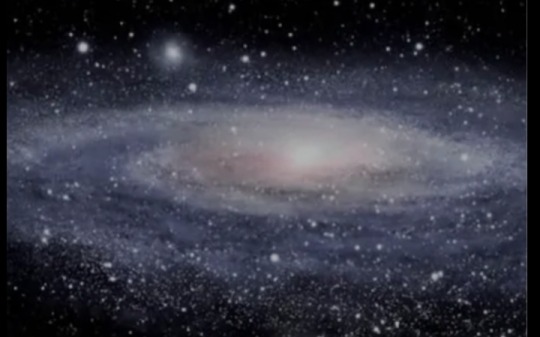
This will measure from side to side like 100 million lightyears. And the galaxy here will be a really tiny grain of salt. The plastic shows you the places where you are more likely to find galaxies, like the Milky Way. The universe looks like a sponge. It’s this system of interconnected cells.
The regions of space that are completely empty are cosmological voids. The universe is mostly empty cells. This membrane that’s flat is a cosmological wall. We are right in the middle of one of these membranes. We’re actually sitting right in between two voids. It’s something that is not commonly understood, but we’re actually literally at the edge of a cosmic cliff.
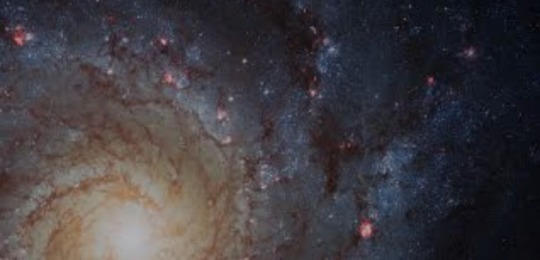
If you take a spaceship and fly toward the void, to this nothingness, you could be flying for hundreds of millions of years not finding anything. Amazing.
The galaxies are not static. They are moving. They have random motions. Galaxies like the Milky Way live in filaments, in clusters. A filament will be the intersection between several walls. Matter moves away from the filaments to form clusters. You end up with a system very similar to bubbles. You go from from very low-density voids to slightly denser walls, even denser filaments, and very massive and dense clusters.

Research over decades looking into velocity dispersion around galaxies—a measure of the amount mass and where it’s moving—has found that around most galaxies it is on the order of 100 to 300 kilometers per second. But when you look at the velocity dispersions around the Milky Way, it’s around 35 kilometers per second. So it’s 10 times lower than what we would expect.
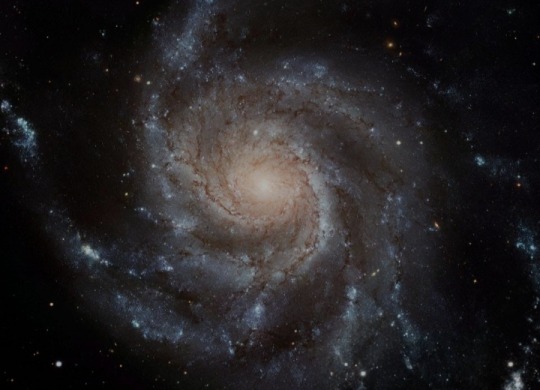
This has been considered a mystery. We don’t know why it is so cold. We say “cold” because everything’s moving very slow. That’s also part of the puzzle. Finding a very massive Milky Way in such a cold environment is very difficult. We’re in a very cold wall. The colder the wall, the harder it is to produce massive galaxies. Why is that? The colder the wall, the faster the matter is moving into the nearby filaments, due to gravity. A similar process will happen when you expand a gas.

You expand a gas and the gas cools down—it’s the same: You have a wall, you expand the wall, and the wall cools down.
Imagine you are a galaxy. You are growing, trying to accrete mass to grow. But then all the matter is moving away from you because the wall is expanding. The matter is moving away from the center of the wall into the filaments, and you are at the center trying to catch matter. You just cannot get enough matter. That’s why you don’t grow.

That is the reason why it is difficult to find massive galaxies in walls, because you are trying to grow and everything is moving away from you. But if you’re in the filament, the matter is falling into you from the walls. The filaments also lose matter because the filaments intersect with each other. The places where they intersect are slightly more dense.
Originally published on nautil.us
COMING UP!!
(Wednesday, February 22nd, 2023)
"WHAT IS QUANTUM FOAM"??
#astronomy#outer space#alternate universe#astrophysics#spacecraft#universe#white universe#space#parallel universe#astrophotography
65 notes
·
View notes
Text
Another Path to Intelligence
https://nautil.us/another-path-to-intelligence-23113/
Comments
2 notes
·
View notes
Text
Pocket Forests Are Coming to Town - Nautilus
https://nautil.us/pocket-forests-are-coming-to-town-359189/
View On WordPress
0 notes